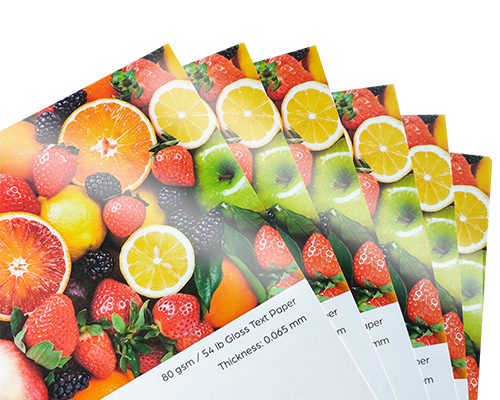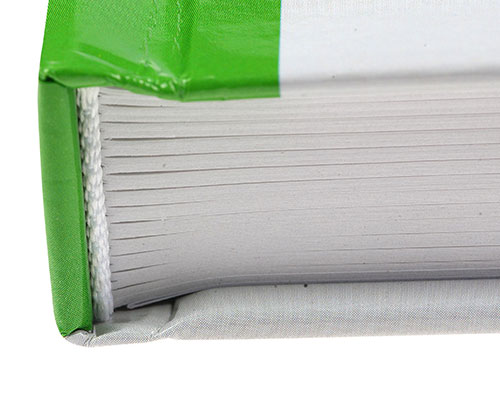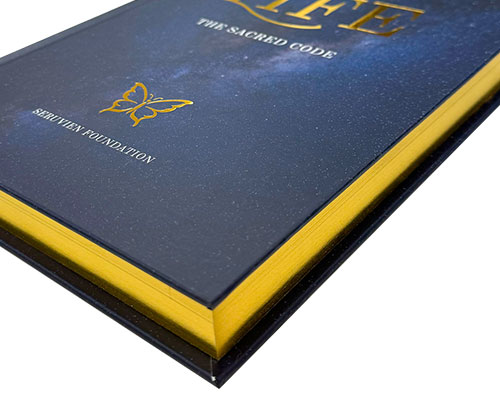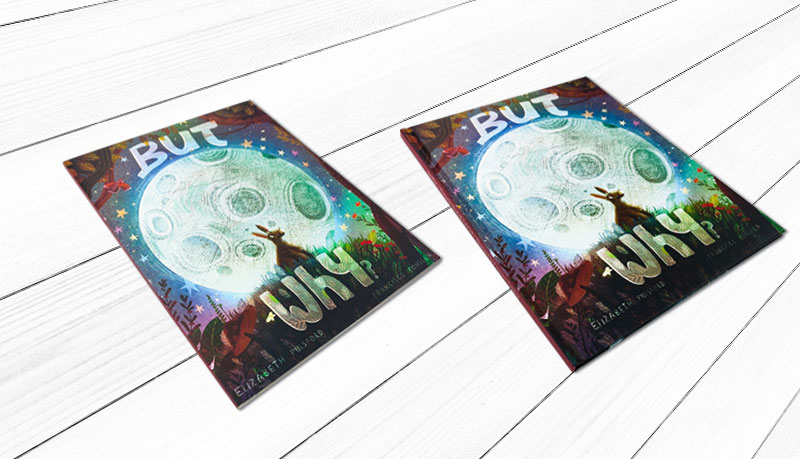Here, we offer you a detailed and informative post that addresses common questions, provides valuable insights, and offers practical advice for anyone considering custom hardcover book printing

Hardcover book printing, long a stalwart offering for mainstream publishing houses, has become a popular choice for successful independent self-publishing authors — especially those with established and responsive email lists — seeking to create high-quality, durable books that stand out. For traditional publishers, custom hardcover book printing allows for special editions that can boost the marketability of an established success or introduce a new author they’ve decided to invest in. Self-publishing authors, on the other hand, have the ability to offer their established fans a superior quality product — for example, a collected series or a box set edition — that they can treasure and keep, while making higher profits per unit sales.
Whether you’re a mainstream publisher looking to produce a limited edition, market an upcoming author with bestseller potential, or an independent author wanting to up your game and boost profits, custom hardcover book printing offers unparalleled flexibility and quality. With a range of options for materials, finishes, and binding techniques, it’s possible to craft a book that is not only visually stunning but also built to last. Embracing custom printing can elevate your book project, providing a tangible, professional product that readers will cherish.
1. Who can benefit from custom hardcover book printing?
Custom printing offers significant benefits for authors, publishers, and businesses, enabling you to produce books that meet specific design and quality standards tailored to individual budgets, genres, markets, branding, and other needs.
- As an author, custom printing provides the opportunity to create a unique, personalized product that reflects your vision and stands out in a crowded market.
- Publishers benefit from the ability to produce special editions or limited runs that can cater to niche audiences or commemorate significant milestones.
- Businesses can leverage custom printing for creating professional, branded materials such as corporate histories, product catalogs, or client gifts, enhancing their brand image and engagement.
Custom printing allows for greater flexibility in choosing materials, finishes, and binding options, resulting in a high-quality product tailored to specific needs. Ultimately, custom printing enhances the overall value and appeal of a book, making it a worthwhile investment for anyone looking to create a lasting impression. And while a hardcover book needs a slightly higher initial investment to produce, the profit margin on the sale price more than compensates for that, guaranteeing an excellent return on the capital investment.

2. What's involved in custom hardcover book printing?
Custom hardcover book printing involves the creation of a book tailored to specific design and quality preferences, rather than wholly standardized formats, and needs creative and practical collaboration between the author or publisher and the printer. Each party engaged in the production of a custom hardcover book edition has specific responsibilities. Here they are.
- The author or publisher is responsible for providing the manuscript, cover design, and any specific requirements for materials, finishes, and binding. They must also communicate clearly and make sure that all files meet the printer’s technical specifications.
- The printer, on the other hand, is responsible for translating these specifications into a physical product, offering expertise on printing techniques, material options, and binding processes. They handle the technical aspects of printing, assembling the book, and ensuring quality control throughout the production process.
Together, both parties work to produce a custom hardcover book that meets the desired standards of durability, aesthetics, and functionality. At QinPrinting, we facilitate and streamline this process by assigning a named expert consultant to each client who is the key contact at intermediary between the author or publisher and the various departments and provides information, updates, guidance, advice, and support at every step of the printing journey from pre-press file setup to final delivery and distribution of the finished books.
3. What are the key components of a custom hardcover book?
Custom hardcover books are distinguished by their high-quality materials and personalized design elements. Understanding the key components involved in their production can help you, as an author or a publisher, to make informed decisions on everything from assigning your budget, interior and cover design considerations, material choices, and marketing and distribution efforts.
Covers
The cover is obviously one of the most important and distinguishing aspects of a hardcover book, providing both protection and aesthetic appeal. Key elements include:
- Cover material: Options range from cloth and leather to printed paper and synthetic materials. Each material offers a different texture and durability level.
- Cover design: Custom printing allows for unique designs, including full-color prints, embossing, debossing, die-cutting, spot UV coating, and foil stamping. These techniques enhance the visual impact of the book and make the book stand out.
- Lamination: Covers can be finished with matte, gloss, or soft-touch lamination, which adds a protective layer and a specific visual and tactile effect. Matte lamination offers a subdued, sophisticated look, while gloss lamination provides a shiny, vibrant finish, and soft-touch lamination gives a velvety, “peachy” feel to the cover.
Paper Types
The choice of paper impacts the book’s feel and readability, the design possibilities, the book’s final dimensions and weight, and the overall costs of production. Common paper types include:
Uncoated paper: Ideal for novels and text-heavy books, providing a classic, easy-to-read surface.

Coated paper: Often used for image-rich books like coffee-table books and fine art or photography books. Coated paper enhances color vibrancy and image clarity.

Specialty papers: Includes recycled paper, textured paper, holographic paper, and other unique options that can add a distinctive touch to the book.

Finishing Options
Finishing touches add both protective qualities and visual appeal to custom hardcover books. Options include:
Dust jackets: Removable outer covers that protect the book and provide additional space for design and information.

Head and tail bands: Decorative elements at the top and bottom of the spine that also help protect the spine from damage.

Marker ribbons: Fabric ribbons sewn into the spine for use as a bookmark, adding both functionality and a touch of elegance.

Edge gilding: Applying a metallic finish to the edges of the pages, which can protect the paper and add a luxurious look.

Slipcases and boxes: Custom-made protective cases that can match the book’s design and provide extra protection and a premium presentation.

Understanding these components helps in creating a custom hardcover book that not only meets your aesthetic and functional needs but also stands out in the marketplace. By carefully selecting each element, authors and publishers can produce a high-quality book that reflects their unique vision and commitment to excellence.
4. What are the benefits of choosing hardcover or softcover?
When deciding between hardcover and softcover for your book, especially if you are an established self-publisher with a positive track record, a responsive email list of dedicated fans, and a passion to make your work the best it can become, it’s essential to consider the numerous benefits that hardcover options provide. Choosing a hardcover can elevate your book’s presentation, durability, and overall appeal while increasing your market visibility and your profit margin.

Durability and longevity
- Superior protection: Hardcovers provide robust protection for the book’s pages, safeguarding them against damage from drops, spills, and general wear and tear. Your books look better for longer and you avoid the telltale signs of cheaply produced POD paperback such as curled covers, loose inner pages, faded colors, and the rest. Every book is an ambassador for your personal author brand and good books do a lot of marketing for you. Hardcovers maximize that potential.
Credibility and professionalism
- Professional look: Hardcovers exude a sense of quality and professionalism, making them the preferred choice for prestigious publications, collectors’ editions, and gift books. The marketplace for self-published books is now more competitive than ever. Making your print edition a hardcover immediately grabs attention and communicates both professionalism and credibility to potential readers.
- Design flexibility: The rigid cover allows for more intricate and high-end design options, such as embossing, debossing, die-cutting, and foil stamping, which you just can’t get with a POD trade paperback. You’ve worked hard and become, if not a bestseller yet, a steady seller and a successful author on your own terms. It makes sense to reflect that value in the quality of the books you produce and that represents who you are as a writer.
Reader's experience
- Pleasant handling: The sturdiness of a hardcover and the sheer tactile qualities make it more comfortable to hold and read, providing a satisfying reading experience.
- Display quality: Keen readers love having beautiful editions on their shelves. Just check out the backdrops to popular book review videos on YouTube, Instagram, and TikTok: almost always a bookcase full of gorgeous hardcover editions! Make sure your book is one of them.
- Lays flat: Many hardcover binding methods, especially sewn binding, which we use as standard, allow the book to lay flat when open, making it easier to read and reference.
Market perception and value
- Higher perceived value: Readers often associate hardcover books with higher quality and value, which can justify a higher selling price and increase profit margins, even though they cost only marginally more to produce than paperbacks.
- Collector’s item: Hardcover editions are often seen as collectible items, appealing to book enthusiasts who value durability and aesthetics.
Expands your market share
- Gift-worthy: Hardcover books make excellent gifts due to their premium look and feel, making them suitable for special occasions and commemorative editions. Book lovers are also book givers. If you make your book gift-worthy by printing it in hardcovers, you open up a new section of the market that few self-publishers exploit.
- Institutional and library use: We’ve written a guide to how to get your books into libraries for self-publishers (and why you’re missing a trick if you don’t). But libraries, schools, and institutions prefer hardcover books for their durability, making sure they withstand frequent handling and usage over time.
Additional Features
- Dust jackets: Hardcovers can come with dust jackets, providing an additional layer of protection and extra space for design elements and information such as author bios, contact info, sign-up CTAs, and more.
- Custom options: Enhanced customization options like head and tail bands, marker ribbons, and slipcases are typically available with hardcover books, adding to their allure and functionality.
Choosing hardcover over, or in addition to, softcover not only enhances the physical and aesthetic qualities of your book but also boosts its market value and longevity. For authors, publishers, and businesses looking to make a lasting impression, and more money, hardcover books can be a worthwhile investment that delivers a superior product to your audience. What’s not to love?
5. What factors influence the cost of custom printing?
The cost of custom printing can vary significantly based on a range of factors. Understanding these elements can help you manage your budget effectively while achieving your desired quality and design.
Quantity of copies
- Volume discounts: Printing larger quantities with an offset printer such as ourselves reduces the cost per unit due to economies of scale. Bulk orders are more cost-effective, allowing you to lower the price per book as the order size increases and consequently increasing your profit margin per sale. For example, it’s entirely reasonable to expect to spend just two or three dollars per book printed; and the market rate for a hardcover when you sell it is about $25 in the US. Do the math!
- Minimum orders: All printers have minimum order requirements, usually between 1000 and 5000 copies, which can impact the overall cost if you’re printing a small batch. At QinPrinting, we understand the needs of the independent creative and so we’ve set order minimums as low as 100 copies. We may be the only professional offset printing company that offers this service.
Book specifications
- Page count: The number of pages directly affects printing costs. More pages mean more paper, ink, and longer binding times, increasing the overall expense.
- Book dimensions: Larger books require more materials, leading to higher costs. Bear in mind that standard sizes are usually more economical than custom dimensions if you need to keep expenses down.
Materials used
- Cover material: Options like cloth, leather, and premium paper can add to the cost compared to standard paper or synthetic covers. Each material has a different price point and durability level. They can all look wonderful, but you’ll need to weigh the effects achieved against the costs involved.
- Interior paper type: Choices between uncoated, coated, or specialty papers will influence the cost, too. Coated papers, often used for image-heavy books such as coffee-table books and fine art or photography books, are typically more expensive. But those books also command higher prices at the point of sale, so you’ll need to get your marketing hat on and work out what will give you the best return on your investment.
Customization and finishing options
- Special finishes: Embossing, debossing, foil stamping, and lamination (matte, gloss, or soft-touch) enhance the book’s appearance but increase production costs.
- Additional features: Elements like dust jackets, marker ribbons, head and tail bands, and edge gilding add to the overall expense but enhance the book’s functionality and aesthetic appeal.
Design and pre-press work
- Design services: Professional design services for the cover and layout can add to the cost. Guaranteeing a polished and professional look might require hiring experienced designers. However, if you want to tackle the design yourself and you choose to print with us, our expert team will be on hand to advise, support, and guide you. We also have a range of useful resources and templates you can exploit to make everything easier as you go.
- Proofing: Physical proofs or advanced digital proofs help catch errors before full production, but may come with additional costs. We offer advanced digital proofs with color-matching as standard. Small added fees apply to physical proofs and samples. However, unlike other companies, we don’t make money out of you for these. We only charge you what it costs us to produce them. We consider it a service, not a sale.
Printing technology
- Digital vs. offset printing: Digital printing is cost-effective for small runs and offers quick turnaround times for several kinds of print projects. But offset printing is more economical for larger quantities, provides higher image quality, superior color reproduction, and is really a no-brainer if you want the range and quality of materials and binding technology you need to produce a professional hardcover book.
Shipping and handling
- Freight costs: The weight and size of the printed books impact shipping costs. International shipping or expedited services will also increase expenses. But, with the right printer (hello!) you’ll find that the savings on production balance out or even exceed the costs of shipping.
- Packaging: Quality packaging ensures books arrive in pristine condition, and with some printers, it adds to the overall cost. At QinPrinting, we consider safe and secure packaging of your books a simple necessity and so we include it in the overall service we provide you.
Location of the printer
- Local vs. overseas printing: Printing locally may offer easier communication and faster turnaround times in some cases, but it could be more expensive. Overseas printing — we’re based out of Shanghai — provides lower production costs, though it may come with longer shipping times and potential communication challenges. Our shipping times are competitive and we’ve established efficient and reliable protocols with our trusted shipping partners, which guarantee excellent turnaround times all over the world. We also consider communication with clients and customer support to be at the heart of our business model.
By considering these factors, you can better understand and manage the costs associated with custom printing. Making informed choices about materials, quantities, and finishing options can help you achieve a high-quality product that aligns with your budget and project goals.
Talk to us!
Producing and printing a custom hardcover book, whether you are enhancing your self-publishing strategy with a premium edition or proposing it as an independent business project, is a creative process that not only allows you to showcase your work in a sophisticated format but also adds significant value to your portfolio of published works — and potentially, your profit margin. The tangible quality and visual appeal of a custom hardcover book makes it a standout piece, perfect for capturing the attention of your readers and leaving a lasting impression.
If you’re interested in exploring this further, we invite you to read more about our custom hardcover book printing services or get in touch today to discuss your specific hardcover book printing needs. We are here to provide guidance, answer your questions, and offer a no-obligation quote tailored to your project. We’re excited to collaborate with you and help turn your vision into the most beautiful custom hardcover book ever!










